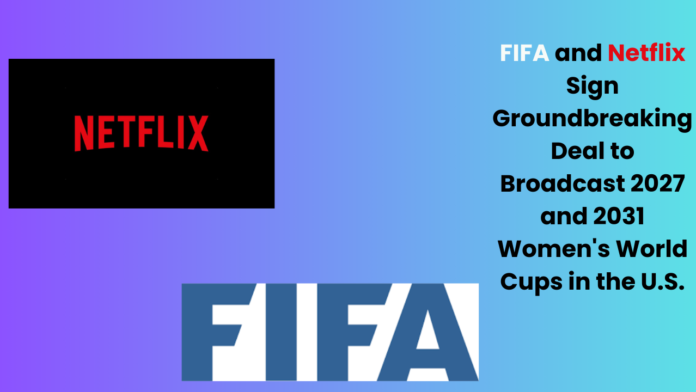In a historic move for women’s sports, FIFA and Netflix have announced a groundbreaking agreement to broadcast the 2027 and 2031 editions of the Women’s World Cup in the United States. This deal, revealed on Friday, marks the first time that Netflix will acquire the exclusive broadcast rights for a major sports competition in its entirety.
Under the new partnership, U.S.-based fans will have access to every match of the Women’s World Cup live, offering an unprecedented level of coverage for the global event. The deal will also include broadcasts for Puerto Rico and will feature dual-language telecasts in both English and Spanish across the U.S., ensuring broader accessibility for diverse audiences.
The agreement signifies a new chapter in the way women’s sports are consumed, with streaming platforms playing an increasingly pivotal role in the global media landscape. FIFA has long championed the growth and visibility of women’s soccer, and this deal with Netflix is a significant step in broadening the sport’s reach, especially in North America.
A Boost for Women’s Sports
The 2027 and 2031 editions of the Women’s World Cup will be historic for more than just the scale of their broadcast. Both tournaments are expected to feature some of the best talent in women’s soccer, including rising stars and established legends. With the global popularity of women’s sports on the rise, this partnership will provide a critical platform for promoting the sport to millions of new fans.
“Through this partnership with Netflix, we are taking a giant leap forward in bringing the FIFA Women’s World Cup to fans in new and innovative ways,” said FIFA President Gianni Infantino. “This collaboration aligns with our long-term goal of advancing women’s soccer worldwide and ensuring that the best players have the visibility and support they deserve.”
Netflix’s Expanding Sports Portfolio
The deal is a significant move for Netflix, which has already ventured into sports content with documentaries, original series, and other sports broadcasting agreements. Now, with this deal to broadcast live matches, Netflix will provide an even more comprehensive sports offering to its U.S. subscribers.
“We are thrilled to bring the Women’s World Cup to Netflix subscribers in the U.S. and Puerto Rico,” said Netflix’s Head of Global Sports. “This partnership not only highlights our commitment to offering the best in live sports, but also our dedication to increasing the visibility of women’s sports on a global stage.”
The full broadcast of every match across both tournaments will include all phases of the competition, from group stages to the final, ensuring that fans do not miss a moment of the action. The dual-language telecasts in English and Spanish reflect Netflix’s efforts to cater to a broad audience and maximize engagement across diverse communities in the U.S.
A Game-Changer for Women’s Soccer in the U.S.
This partnership will also be a game-changer for women’s soccer in the U.S., where interest in the sport has been growing rapidly, especially with the success of the U.S. Women’s National Team (USWNT) in recent years. With more than 26 million women and girls playing soccer in the U.S., the potential for a massive viewership for the Women’s World Cup is huge.
By bringing these two editions of the Women’s World Cup directly to the living rooms of millions of American homes, FIFA and Netflix are poised to further the growth of women’s soccer and inspire the next generation of players, coaches, and fans. With the accessibility of streaming, fans will now have the freedom to watch games from anywhere, anytime, in a way that was not previously possible for global tournaments of this scale.
Looking Ahead
As we approach the 2027 and 2031 tournaments, excitement is already building, and this deal marks just the beginning of a new era for women’s sports broadcasting. With Netflix’s massive global reach and FIFA’s dedication to expanding the Women’s World Cup, the future of women’s soccer looks brighter than ever before.
Fans across the U.S. and Puerto Rico can now look forward to experiencing the Women’s World Cup like never before—live, accessible, and in full—making this deal a major milestone for both organizations and for the sport itself.




